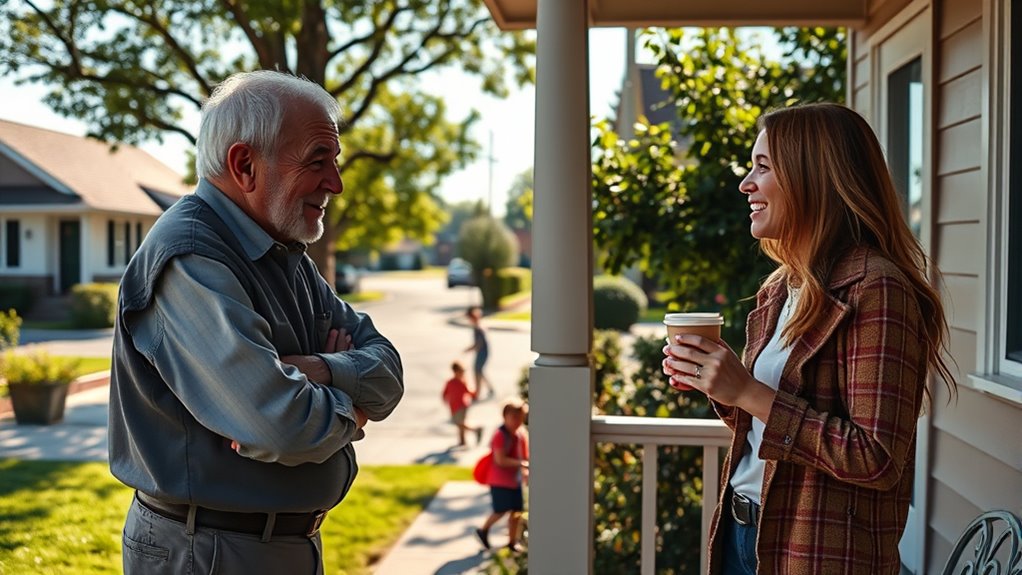Rekindling neighborly chats restores a sense of community, trust, and safety that has been lost over time. Historically, conversations around fires and markets strengthened bonds and shared values. Today’s busy lives and technology often create barriers to face-to-face interactions. By starting simple conversations and embracing casual encounters, you can foster stronger connections and a safer environment. If you want to learn how to revive these meaningful exchanges, keep exploring the ideas ahead.
Key Takeaways
- Community conversations historically fostered trust, social bonds, and shared identity essential for societal cohesion.
- Modern barriers like busy schedules and technology reduce face-to-face neighbor interactions.
- Rekindling neighborly chats enhances safety, support, and mental well-being in communities.
- Simple gestures and casual questions can effectively restart conversations and build stronger connections.
- Reviving the art of neighborly chatting promotes safer, more inclusive, and resilient neighborhoods.
The Historical Significance of Community Conversations
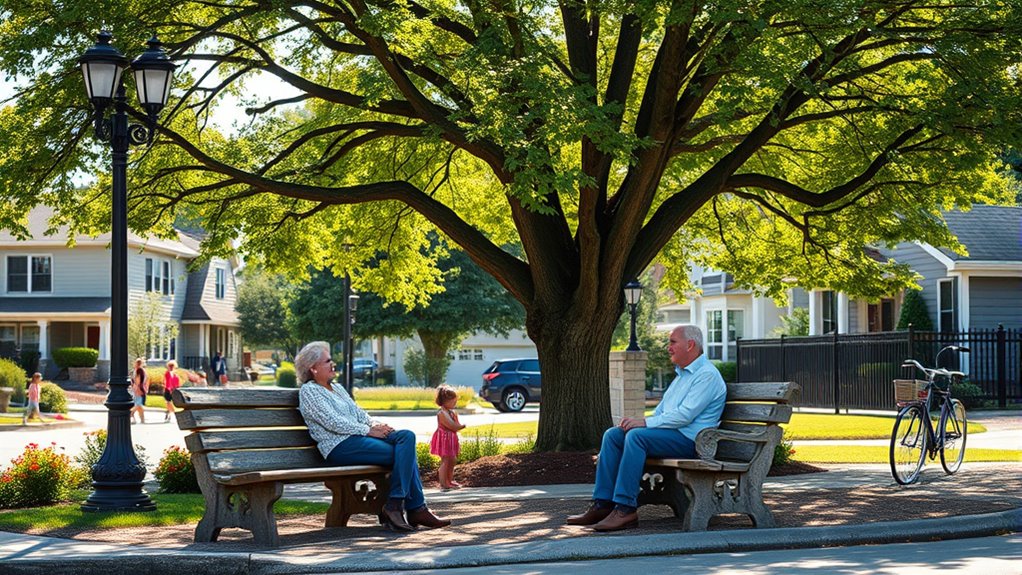
Community conversations have played a crucial role throughout history in shaping societies and fostering social bonds. You’ve likely seen how storytelling served as a cornerstone of communal traditions, passing down values, history, and moral lessons from generation to generation. In ancient communities, gatherings around fires or markets allowed people to share their stories, creating a sense of identity and belonging. These conversations weren’t just about exchanging information—they built trust and reinforced social cohesion. By participating in historical storytelling, you connect with your ancestors and understand the roots of your community’s culture. Such dialogues helped societies survive, adapt, and thrive, demonstrating how essential neighborly chats have been in shaping human history and maintaining social fabric over centuries. The use of oral tradition in these exchanges ensured the preservation of knowledge without written records, further strengthening communal bonds.
Modern Barriers to Neighborly Engagement
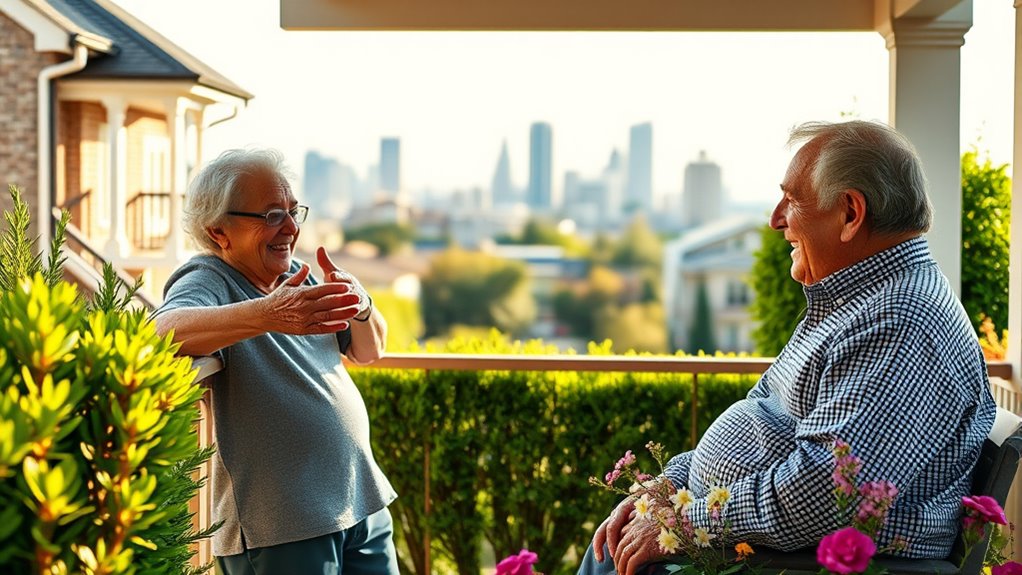
Despite the importance of neighborly engagement, several modern barriers make it difficult for people to connect today. Busy schedules and demanding work lives leave little time for casual interactions like doorstep greetings. Many residents feel isolated or hesitant to initiate contact, fearing awkwardness or rejection. Neighborhood events, once a staple of community bonding, often get sidelined due to lack of time or interest. Technology also plays a role, encouraging virtual interactions over face-to-face conversations, which can reduce opportunities for spontaneous chats. Additionally, increasing privacy concerns make some wary of engaging with neighbors. These barriers create a gap that makes building genuine connections harder, emphasizing the need for intentional efforts to revive simple gestures like doorstep greetings and participate in neighborhood events. Exploring community engagement strategies, such as localized hackathons or virtual meetups, can help bridge this divide and foster stronger neighborly bonds.
Benefits of Rekindling Neighborhood Connections
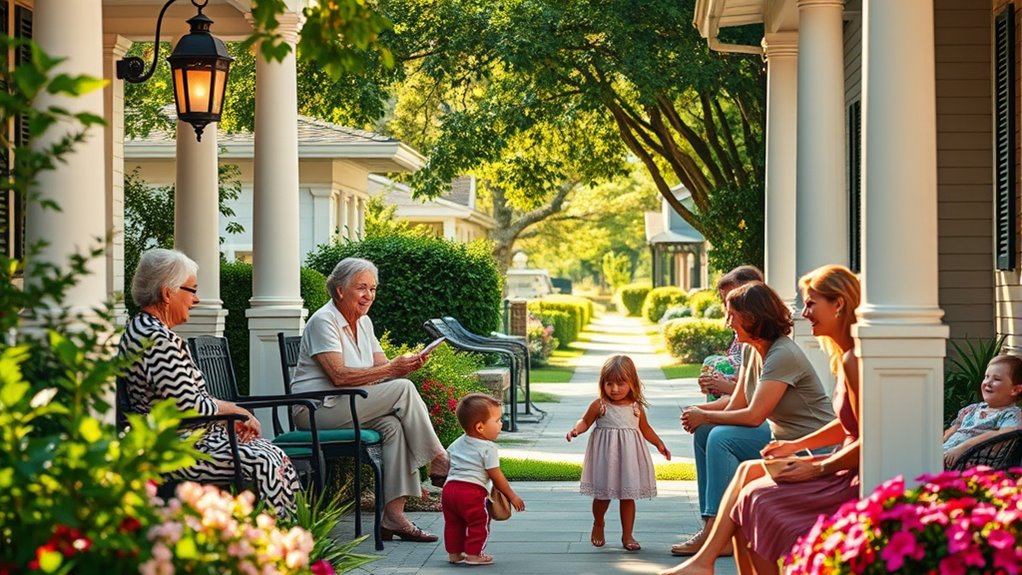
Rekindling neighborhood connections offers numerous benefits that enhance your daily life and overall well-being. Participating in street gatherings allows you to build trust and foster a sense of safety within your community. These events create opportunities for shared stories, helping you feel more connected and supported. When neighbors engage regularly, you gain access to local resources and advice, making daily challenges easier to handle. Stronger relationships also promote kindness and collaboration, creating a more welcoming environment for everyone. Additionally, reconnecting with neighbors can boost your mental health by reducing feelings of loneliness and isolation. Understanding self watering plant pots can be a helpful aspect of community gardening projects, encouraging sustainable practices and shared care. Overall, revitalizing neighborhood ties nurtures a vibrant, resilient community where everyone feels valued and included. It’s a simple step that brings lasting positive change to your everyday life.
Practical Ways to Start Chatting Again
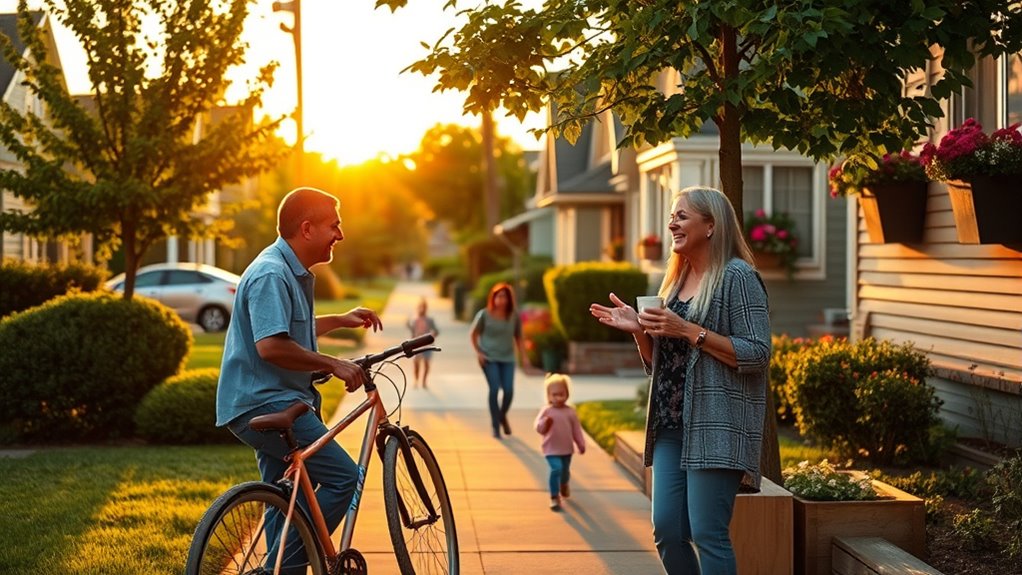
Getting conversations started again can seem intimidating, but simple, intentional actions make it easier. Begin by observing street etiquette—smile, make eye contact, and offer a friendly wave. These social cues signal openness and friendliness without being intrusive. When you see your neighbor outside, start with a genuine compliment or a casual comment about the weather or neighborhood. Keep your body language relaxed and approachable. If you’re unsure how to break the ice, a simple “Hi, how’s your day going?” works well. Remember, small gestures build comfort over time. Consistently practicing these social cues and respecting street etiquette helps create natural opportunities for conversation, making neighborly chats feel less formidable and more authentic. Incorporating awareness of community engagement practices further enhances connection and trust among neighbors.
Building a Stronger, Safer Community Through Conversation

Engaging in conversations with your neighbors can considerably strengthen community bonds and enhance safety for everyone. Urban bonding happens when neighbors connect, share concerns, and support each other, creating a more resilient neighborhood. Through regular trust building, you foster a sense of security, making it easier to identify and address issues early. Talking openly about local safety concerns or community projects encourages collaboration and mutual responsibility. When neighbors communicate, they develop a sense of shared purpose, making the area less inviting to troublemakers. These conversations build familiarity and trust, transforming strangers into allies. Ultimately, honest dialogue creates a safer, more cohesive environment where everyone feels valued and protected. Building these relationships is a crucial step toward a stronger, safer community for all. Developing cultural intelligence in neighborhood interactions can further improve communication and understanding across diverse community members.
Frequently Asked Questions
How Do Cultural Differences Influence Neighborly Communication?
Cultural differences shape neighborly communication considerably. You might find that cultural etiquette influences how openly you talk or approach others, while communication barriers like language or gestures can cause misunderstandings. Being aware of these differences helps you respect boundaries and adapt your interactions. By showing sensitivity and patience, you foster better connections, making neighborhood relationships stronger and more harmonious despite diverse backgrounds.
What Role Does Technology Play in Modern Neighborhood Interactions?
Technology transforms neighborhood interactions by bridging gaps, breaking down digital barriers, and connecting you instantly through social media. It makes sharing updates, organizing events, or offering help easier and faster. Yet, it can also create distance if you rely solely on screens. Balancing online engagement with face-to-face conversations helps nurture genuine relationships, making your neighborhood more connected, supportive, and vibrant.
How Can Residents Overcome Social Anxieties When Approaching Neighbors?
To overcome social anxieties when approaching neighbors, focus on building confidence by starting conversations with simple topics like the weather or shared community spaces. Remember, neighbors often appreciate friendly gestures and genuine interest. Take small steps, like saying hello or offering help, to make interactions less intimidating. With practice, you’ll become more comfortable, making it easier to connect and foster a stronger, more welcoming neighborhood environment.
Are There Specific Age Groups More Inclined to Engage in Neighborhood Chats?
Imagine a garden where different flowers bloom at varying times. Age demographics show that older adults tend to engage more in neighborhood chats, likely due to generational differences valuing community ties. Younger generations, busy with digital lives, may chat less often. You might notice seniors sharing stories on porches, while younger folks scroll online. Understanding these trends helps you connect across age groups, fostering stronger neighborhood bonds.
How Does Neighborhood Conversation Impact Local Safety Initiatives?
When you engage in neighborhood conversations, you boost community trust and safety awareness. Talking with neighbors helps you share concerns, report suspicious activity, and stay informed about local issues. This open communication creates a safer environment because everyone feels more connected and vigilant. Your active participation encourages others to get involved, strengthening community bonds and making safety initiatives more effective and widespread.
Conclusion
Rekindling neighborhood conversations strengthens trust, fosters safety, and builds bonds. It creates connections that comfort, encourage, and inspire. It turns strangers into neighbors, silence into conversations, and indifference into community. When you reach out, you’re not just saying hello—you’re building a legacy of support, understanding, and belonging. So, start chatting, listen actively, and remember: every small talk can make a big difference in your neighborhood’s future.
